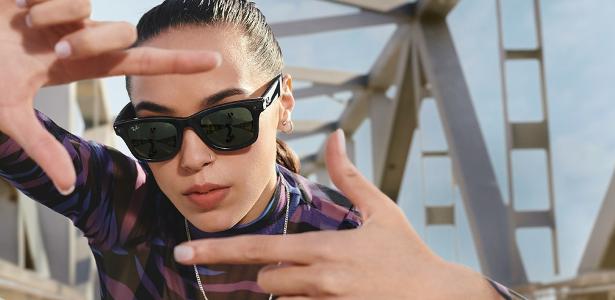Now it’s official: smart glasses from Facebook are officially for sale. Called Ray-Ban Stories, a direct reference to Instagram, these glasses can be purchased in 20 models and 5 color and lens options in the United States.
According to foreign journalists who have already tested the product, the Ray-Ban Stories is the best version of smart glasses in recent years. But coming from Facebook, a company whose reputation in the area of privacy is not the best, and with the curious concept of using cell phones in its face, most early reviews raise doubts about the project’s viability.
Joanna Stern, journalist for The Washington Post, did an experiment: she took the Ray-Ban Stories for a walk in the park and started recording random people. Even getting close, most didn’t notice the small LED light next to the camera and didn’t realize they were being filmed through the glasses.
“Most don’t notice that little recording light and don’t think twice about wearing these glasses,” says Joanna. “People just think, ‘It looks great.’ Which could basically turn them into spy glasses.”
In turn, the quality of the images is not impressive. “It’s not the kind you’d see using a iPhone, but it’s not too bad to share,” says the journalist. According to her, glasses are useful in situations where you don’t want to take the cell phone pocket to create stories or take a photo: “the first-person point of view is just too much”.
If glasses with high-quality cameras and microphones are the future, then, Joanna argues, “we need, at the very least, a bigger indicator that these are not just classic sunglasses, but cameras capable of recording everyone we meet.”
The size of the light that tells you that the glasses are recording is also criticized by Alex Heath, from the website “The Verge”. “While it’s obviously good that this light exists, I think it could be brighter and more prominent,” says the journalist.
The good thing is the look. “Unlike almost all other smart glasses I’ve tried, these really look like normal glasses. They’re almost as light as regular glasses.”
Lucas Matney, from the website “TechCrunch”, highlighted the quality of the audio. “The sound outputs close to the ear will surprise you with the quality in quiet environments and leave you unsatisfied when you are in a noisier place.”
The “solid” battery is a plus, according to Lucas, who also highlights the benefit of using the original glasses case as a charging case — similar to wireless headphone cases like AirPods. A negative point, according to him, is the lack of protection against water or even splashes.
Although there is still no forecast to be launched in Brazil, the price in the United States is US$ 299 — an amount that can go up if the consumer needs prescription lenses, for example. Australia, Canada, Ireland, Italy and the United Kingdom are the other countries that have already received the news.
–


